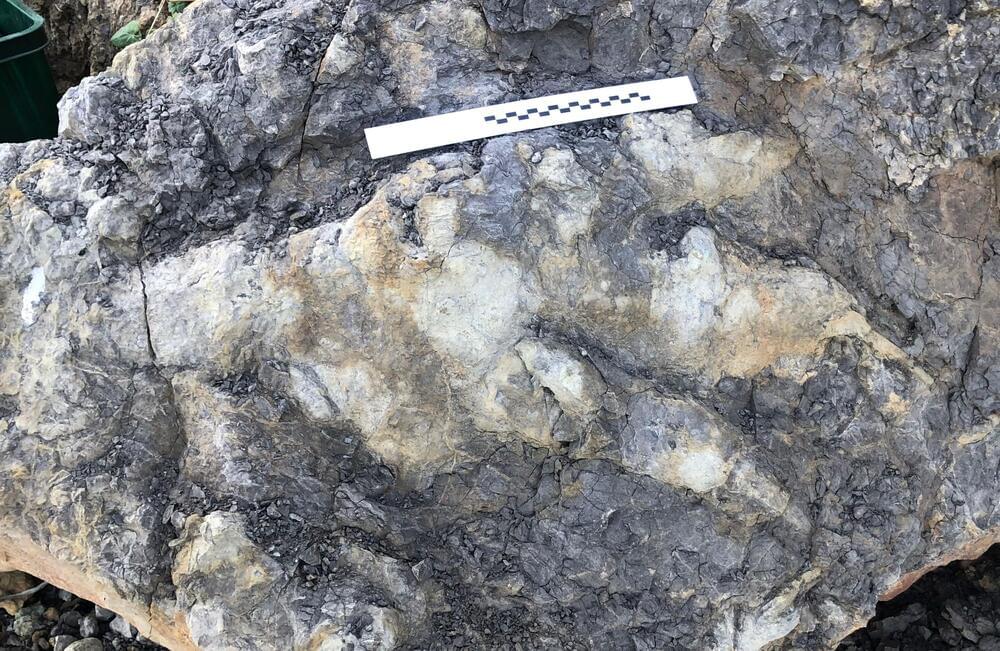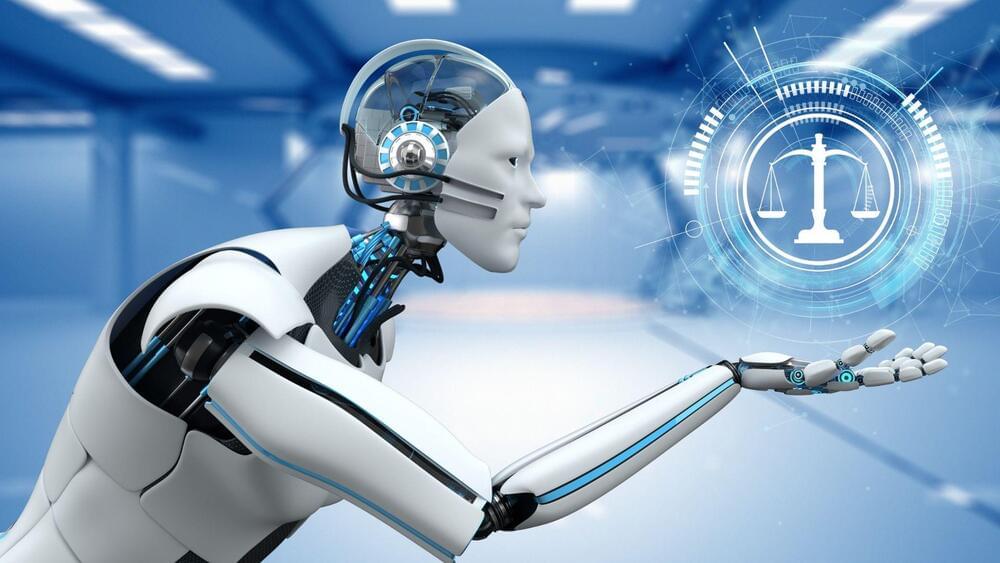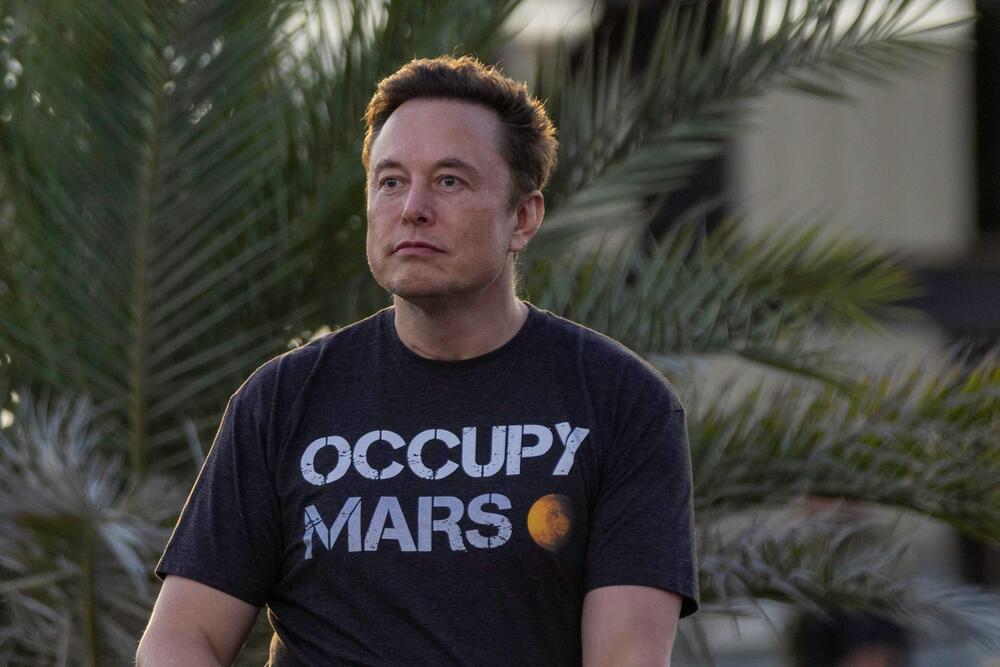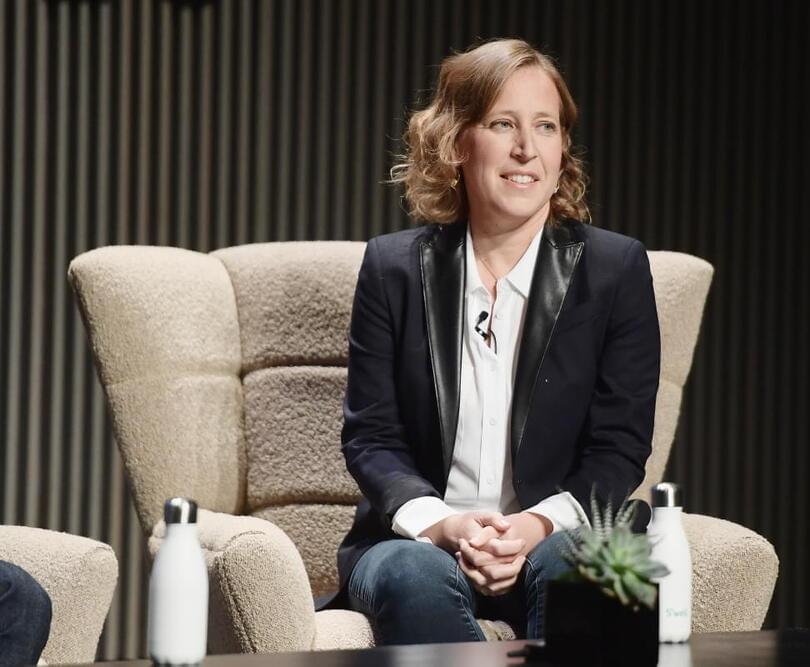A facial approximation reveals what Zuzu, a man who lived 9,600 years ago in Brazil, may have looked like.
Get the latest international news and world events from around the world.

Giant meat-eating dinosaur footprint is largest found in Yorkshire
An almost meter-long footprint made by a giant, meat-eating theropod dinosaur from the Jurassic Period represents the largest of its kind ever found in Yorkshire. Curiously, the unusual footprint appears to capture the moment that the dinosaur rested or crouched down some 166 million years ago.
The Yorkshire coast is renowned for producing some visually and scientifically incredible fossils, including thousands of dinosaur footprints. A popular destination for professional paleontologists and fossil fans, people come from far and wide to see what they can find; however, it is not every day that a footprint measuring 80 centimeters in length is discovered.
This record-breaking print was found by local archaeologist Marie Woods in April 2021. She had gone out along the coast and found this amazing fossil completely by chance. In her excitement and disbelief, Marie made contact with local fossil experts, but none were aware of the track she was describing. Following this, she then contacted Dr. Dean Lomax, a paleontologist affiliated with The University of Manchester and author of “Dinosaurs of the British Isles.”
Now you can sit back and watch a robot pump gas into your cars
The system can be attached to any fuel dispenser, offering a hands-free solution.
In an era where technology is taking over all spheres of life, refueling techniques have remained mainl a mechanical process that demands the utmost attention from the user. As a solution to this, Denmark-based Autofuel is offering a robotic refueling system that cuts the need for drivers’ attention or direct involvement.

Fission rocket concept could reach Solar Gravitation Lens in 15 years
The concept could one day capture incredibly detailed images of distant alien worlds.
NASA is betting on nuclear propulsion technologies. The space agency’s Institute of Advanced Concepts (NIAC) awarded a grant to a company called Positron Dynamics for the development of a novel type of nuclear fission fragment rocket engine (FFRE).
The lightweight nuclear fission engine concept could outperform traditional chemical rocket engines while also allowing for long-lasting, deep space missions.
NASA says it could travel to the Solar Gravitational Lens in 15 years, allowing for incredibly detailed images of distant alien worlds.
NASA, Ryan Weed.
The space agency’s Institute of Advanced Concepts (NIAC) awarded a grant to a company called Positron Dynamics for the development of a novel type of nuclear fission fragment rocket engine (FFRE).
SPIDAR: A groundbreaking spider-like robot is ready to change robotics
Thrusters may provide propulsion in any direction and can “roll” around the limb.
Meet the University of Tokyo’s SPIDAR, the backronym of “SpherIcally vectorable and Distributed rotors assisted Air-ground amphibious quadruped Robot,” with multimodal locomotion capability.
How does it work?
Moju Zhao.
The 33-pound robot SPIDAR employs servos on its movable limbs that are lightweight but insufficiently powerful to allow it to stand by itself. This keeps it light enough to fly without a jet engine, but it also means that the spider must maintain a continual bounce to maintain its upright position.

Unleashing Harvey AI: ChatGPT-powered tech transforming legal industry
Allen & Overy (A&O), one of the world’s largest law firms, has partnered with OpenAI-backed artificial intelligence (AI) start-up Harvey AI to automate legal document drafting and research.
The London-based law firm claims that over 3,500 of its lawyers have already tested Harvey AI, an adaption from OpenAI’s ChatGPT software, according to a press release published by the company on Wednesday.
From chatbots to facial recognition, here’s how AI impacts your daily life
AI has the potential to improve our lives and increase efficiency but it also raises important ethical and societal questions.
Artificial Intelligence (AI) has come a long way since its inception and is now an integral part of our daily lives.
From virtual personal assistants to recommendation systems, AI is transforming how we interact with technology and making our lives more convenient and efficient. With the increasing popularity and use of AI, it’s essential to understand how it is used in our daily lives and how it affects how we live and work.
Artificial intelligence is, as you are about to find out, ubiquitous in our daily lives online. But where and how?
IE & Black_Kira/iStock.

Researchers resurrect dead birds as drones, thanks to taxidermy
A team of researchers has successfully developed drones from the bodies of stuffed dead birds. While a little macabre, the team members believe such drones could one day be used to watch animals without being seen.
But, as revealed at the American Institute of Aeronautics and Astronautics SciTech 2023 Forum, the same taxidermy drones could also be used to spy on human subjects by governments or militaries.

Elon Musk Has Issued A Stark Warning Over AI. This Isn’t His First Time
Elon Musk, an outspoken AI commentator, has reiterated his calls for safety checks at the World Government Summit in DubaiMusk founded OpenAI to promote AI regulation, but says the company’s changed since Microsoft’s investment.
Microsoft and Google are vying to best one another in the field, which Musk worries drives down safety checks in the pursuit of winning the race.
Thanks to the success of ChatGPT, 2023 kicked off with intense hype around the power of artificial intelligence. It’s no wonder Elon Musk, one of tech’s most outspoken public figures, had something to say on the subject.

YouTube CEO Susan Wojcicki steps down, will assume advisory role at Google and Alphabet
Susan Wojcicki is stepping down as YouTube CEO after nine years at the helm. In a letter to employees (first published by Recode), Wojcicki says that she’s leaving in order to “start a new chapter focused on my family, health and personal projects I’m passionate about.”
“Today, after nearly 25 years here, I’ve decided to step back from my role as the head of YouTube,” Wojcicki wrote. “The time is right for me, and I feel able to do this because we have an incredible leadership team in place at YouTube.”
Wojcicki will be replaced by Neal Mohan, YouTube’s longtime chief product officer. Mohan came to Google with the tech giant’s DoubleClick acquisition in 2007, and — as his responsibilities grew — he was promoted to SVP of display and video ads before assuming his current role in 2015. As for Wojcicki, she says that she’ll take on an “advisory role” across Google and Alphabet, offering counsel and guidance.